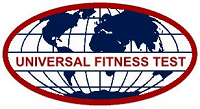|
Principles |
|||||||||||||||||||||||||||||||||||||||||||||||||||||||
|
Measuring and Managing the risk
|
Principles underscoring the Universal Fitness Test
The three great body system dysfunctions of our time are:
1. Metabolic
2. Musculo-skeletal
3. Psychological.
We’ve narrowed down the tests to those of metabolic health (aerobic fitness) and the strength component of musculo-skeletal health. Flexibility is not so important in this context, though it is vitally important in measuring the risk of personally-generated musculo-skeletal dysfunction.
PRINCIPLES
You want to be able to use the smallest number of field tests that
MEASURING AEROBIC FITNESS
It's important that aerobic fitness be in a fitness test battery because aerobic fitness is the foundation of good metabolic health..
The most meaningful way to measure it is the Miller 20m, 5 minute run. The test involves people seeing how many laps of a 20m course they can complete in 5 minutes. It's an improvement on the 'beep test'.
In our experience people in poor metabolic health will walk for the full five minutes. People who are fit will run.
Those in between will walk, shuffle and jog.
A trained observed can monitor progress of participants and slow down those who are not in good shape and who appear to be struggling.
People in poor shape will do less than 20 laps. People in good shape will do over 40 laps.
The worst case we’ve seen is 9 laps. The best case is 60 laps for men and 55 for women, so the test provides a very discriminating set of scores.
It is suitable for elite force employees. We recommend the diamond or platinum levels.
The advantage of the Miller 20m run over the ‘beep test’ is that it takes less time to administer and doesn’t require a device to broadcast ‘beeps.’ It is suitable to use with groups, with up to 20 people being able to take part in the test at the same time.
Click here to read more about the test.
The Miller 20m run test provides participants with more meaningful feedback about the status of their aerobic fitness than the ‘beep’ test. For many people it is a salutary reminder of just how out of condition they are, compared with what their condition has been in the past.
People can use the test at any time to measure their aerobic fitness at home.
It provides more meaningful feedback than a bicycle ergometer test.
You won’t find this test in any red or green book because the medical industry at the parish level doesn’t measure aerobic fitness. Cardiac specialists do, expensively, with their clients on a treadmill or stationary bike while hooked up to a range of monitors.
Treadmill and stationary bike tests Treadmill and bicycle ergonometer tests are, in the main progressive - ie you keep increasing the speed and the elevation until people are forced to give up. Being one-on-one laboratory tests, they are expensive and time-consuming to do. You could do 40 x 20m run tests in less time it takes to do one treadmill or bike test.
They are good tests for people with severe metabolic dysfunction where heart rate and other vital functions need to be closely monitored while the test is done.
You can measure aerobic fitness using a Polar Heart Rate Monitor with participants sitting down. It’s a useful test for people in poor metabolic condition, where the risk of even the Miller 20m run test may not be appropriate.
However, whilst it provides metabolic function testers with a good measure of aerobic fitness, it doesn’t provide the participants with overly meaningful information, other than that they are in good, poor or indifferent condition.
MEASURING STRENGTH
The principles that apply to deciding which aerobic fitness test is the best also apply to the selection of tests of strength.
You want to smallest number of tests.
We believe the four tests:
... fit the needs of a small number of tests measuring the strength of a wide range of muscles.
We believe the people who perform best in these three tests will perform best at any tests specifically related to a job that involves lifting, carrying, holding and propelling objects.
If we were to add one extra test it would be an ability to support one's own weight while suspended (by the hands) from a bar.
SUPPLEMENTARY TESTS
We've included three (optional) supplementary tests
Miller Health
7 Salvado Place, Stirling (Canberra) ACT
2611 Australia
(02) 6288 7703
|
||||||||||||||||||||||||||||||||||||||||||||||||||||||
